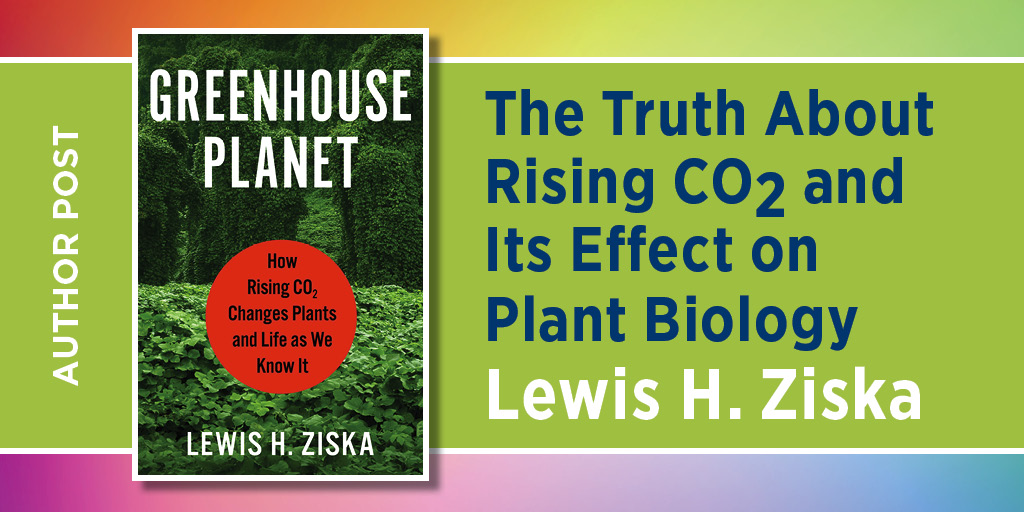The Truth About Rising CO2 and Its Effect on Plant Biology
Lewis H. Ziska

We recognize that the global concentration of carbon dioxide (CO2) and other heat-trapping gasses is rising, that global warming, or climate change, is going to be a consequence. For many people, that consequence is seen through images that have become iconic, from polar bears clinging to shrinking ice floes to desperate newscasters reporting on “one-in-a-thousand-years” storms while being blown about by winds. It makes for good television and viral social media hits. And it is deserving of attention, of response.
But there is another aspect to rising carbon dioxide, one that unfortunately doesn’t lend itself to a cinematic outcome. No matter what the end effect of rising temperatures is, the ongoing increase in atmospheric CO2 has affected and will continue to affect all life on the planet.
Why? Because CO2, in addition to being the primary greenhouse gas, is also the source of carbon for plants to grow. Plants evolved at a time when the atmospheric CO2 was much higher than today; hence recent and projected increases in CO2 will stimulate plant photosynthesis and plant growth. Life for us and for every ecosystem on the planet depends on the ability of plants to generate complex carbohydrates and chemical energy from just four basic resources: sunlight, nutrients (e.g., nitrogen and phosphorous), water, and CO2. Plants are the basis for the global food chain, so any change in their biology holds consequences for life as we know it.
Plants are the basis for the global food chain, so any change in their biology holds consequences for life as we know it.
Hang on—isn’t more plant growth, well, “good”? It is certainly tempting to think that any stimulation in plant growth will be beneficial. But it is also important to recognize that any increase in a plant resource will not cause all plant species to respond equally. Perhaps one of the best examples is the Duke University pine forest, which for a number of years was subject to additional CO2 in order to simulate how forests would respond in the future. Did the pine trees grow more? Yes, they did. But they were not the species that responded the most. The winner? An understory vine, Toxicodendron radicans, aka, poison ivy. Not only did it grow and proliferate more than the pine trees, it produced a more virulent form of urushiol, the oil in poison ivy that causes that characteristic itchy rash. Another example? Ragweed—something to sneeze at—can grow bigger and develop more allergenic pollen in response to rising CO2 levels.
There are other implications for global health. Not as splashy as Old Testament storms, but still quite important to consider. More CO2 can reduce the nutritional composition of basic cereals like wheat and rice; favor the growth of weeds over crops (and also decrease our ability to chemically control and contain weeds); alter plant-based medicines; make some plants more poisonous; affect the success and establishment of invasive species; and more. It is a long list.
And it is an interesting list—the good, the bad and the ugly—when it comes to rising CO2 and plant biology. It is, literally, the “green” in the “greenhouse effect.” You may not have heard about it, understandably. Plants are passive and pastoral, but not to be ignored. If you want to find out more, pick up a copy of Greenhouse Planet.
Lewis H. Ziska is associate professor of environmental health sciences at Columbia University’s Mailman School of Public Health, and the author of Greenhouse Planet: How Rising CO2 Changes Plants and Life as We Know It.








